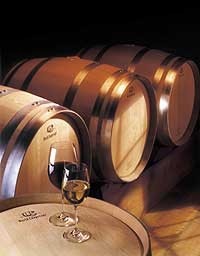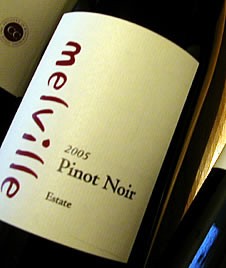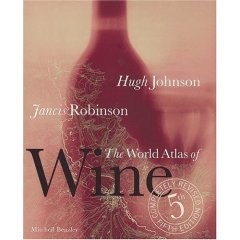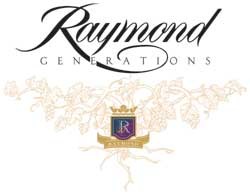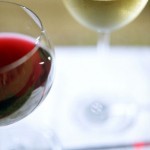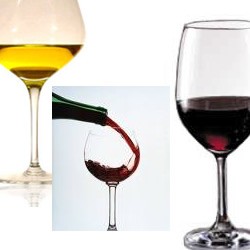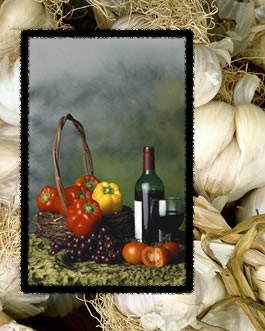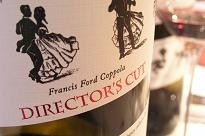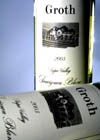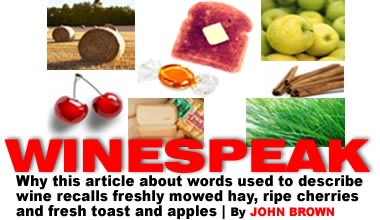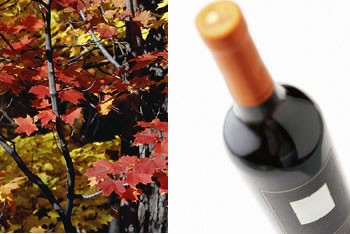
Fall is upon us and with the cooler weather the number of indoor activities naturally increases. Consequently, there are a greater number of wine tastings, gourmet-wine dinners and other gastronomic events around our beautiful state. Whether you decide to stay close to home or travel, there are some nice events on the horizon for wine and food lovers in West Virginia. Check these out.
Bridgeport
Oct. 22: Provence Market's October Wine TastingIf you’re in the north-central WV area next week, you might stop by Provence Market Cafe for a tasting of some good Mountain State wine as Elaine and Alan Wolfe present their Jones Cabin Run Vineyards "Award Winning" selections on Monday, October 22. The tasting begins at 6 p.m.and costs $20 per person.
In case you didn’t know, Provence Market Café is an excellent restaurant with a Wine Spectator award winning wine list. You also might want to check out their annual Holiday Tasting which is scheduled for Monday, December 3rd. For further information on tastings or for dinner reservations call 304-848- 0911
Charleston
OCT. 22: Chefs with Golden Spoons DinnerIf you want to experience the best West Virginia’s culinary wizards have to offer, then consider attending the annual March of Dimes dinner and auction at Berry Hills Country Club on Monday Oct. 22, at 6:30 p.m. The dinner event will feature dishes donated by chefs from around the state, including those from Canaan Valley Resort, The Chop House, Edgewood and Berry Hills Country Clubs, Olgebay Resort, The Blossom, Snowshoe and several others. Attendees may bid for dinner packages in the chef’s restaurants, jewelry and weekend getaways. Tickets are $75 in advance and $100 at the door. Call 720-2229 for reservations. All proceeds from the event go to the March of Dimes.
NOV. 1: Science of Wine & Art of Food fundraiser
The 11th annual Science of Wine & Art of Food fundraiser by the Friends of the Clay Center takes place 6:30 p.m., Thursday, Nov. 1, at the Clay Center, featuring a five-course menu paired with wines of New Zealand and Australia. The menu will be prepared by the Clay Center's in-house caterer, Embassy Suites Hotel-Charleston and will feature assorted canapés of vegetables and gourmet cheeses; mussels a la mariniere; Autumn salad of mixed greens and poached pears; a mixed grill duo of lamb and venison; and almond tuile filled with vanilla mint mascarpone.
Silent and live auctions take place throughout the evening including trip to Sonoma, California; Alberta, Canada; and Hawaii, as well as such silent auctions for wine, gourmet food baskets, theater and sporting event tickets and more. Reservations are required by Friday, Oct. 26. Tickets cost $100 per person. Registration is available online at www.theclaycenter.org. Science of Wine & Art of Food is sponsored by Spilman, Thomas & Battle, PLLC, with additional support from BrickStreet Insurance, Commercial Insurance Services, Embassy Suites Hotel-Charleston and Warner Law Offices, PLLC.
NOV. 5: Capitol Market Wine and Cheese Shop
The Shop will hold its annual wine dinner on Monday, Nov. 5 at the Blossom Deli at
the Capitol Market in Charleston. Chef Michael Rice has planned an Italian-themed menu to pair with wines selected by Vin Divino, an importer of fine Italian and Austrian wines. This will be five-course meal paired with six wines from Austria and Italy. The cost of the event is $75 per person and space is very limited, so call the Wine Shop at 343-9463 to reserve your spot.
NOV. 15: Blues BBQ Restaurant
The fine folks at Blues, across from the Clay Center at Lee Street and Leon Sullivan Way, will be holding a holiday-themed wine and food dinner on Nov. 15, beginning at 7 p.m. The menu is being constructed around traditional holiday foods matched with an international array of wines. Call Blues at 720-7873 for more information and to make a reservation.
Canaan Valley
NOV. 9-11: Canaan ValleyJoin me for a "Gourmet Wine Weekend In the Mountains - With WineBoy," the weekend of Nov. 9-11 at
Canaan Valley Resort for an entertaining and educational food and wine extravaganza. I’ll select wines from around the world that will be paired with a cornucopia of culinary delicacies.
I’ll team up with Canaan Valley Resort’s executive chef Nemat Odeh to lead you on a tasteful wine and food adventure. Incidentally, Chef Odeh did his culinary training in Europe and is a really talented guy. Here’s the schedule: Friday, guests will kick-off the weekend with a "taste-around reception" where wines from the world's most prestigious regions can be sampled with matching culinary treats, including crab cakes, beef tenderloin, smoked salmon, pasta, a raw bar and other treats.
An educational wine tasting and seminar conducted by your own WineBoy will begin Saturday's activities followed by a delicious luncheon with specially selected wines. Chef Odeh will then conduct a Q & A and culinary demonstration after which guests can enjoy an afternoon of activities or relaxation in the Canaan Valley. The evening's activities begin with a Champagne reception followed by a six-course gourmet meal with matching wines. A Sunday brunch will conclude the weekend’s activities.
Cost of the entire weekend, including taxes and gratuities, is $450 a couple or $269 individual. Cost of the package without lodging is $350 a couple or $175 individual. For additional information or reservations, call 800-622-4121.

